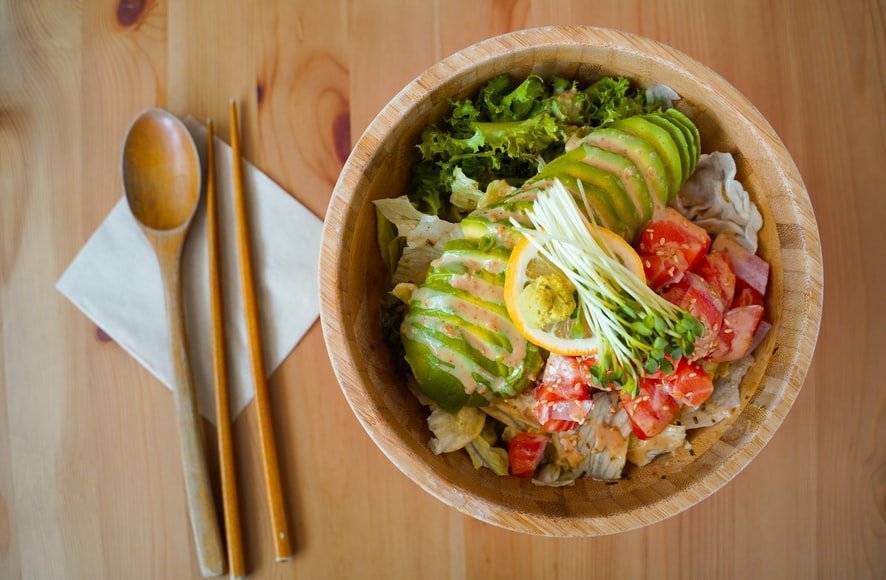Fiber is the unsung hero when it comes to promoting long-term health! It contributes to the health of our gut microbiome, eliminates waste from the body, and assists us in maintaining a healthy weight. Additionally, when you consume enough fiber on a regular basis, you can help reduce your risk of diabetes, heart disease, stroke, and all types of cancer.
With all of those wonderful benefits, it’s clear that we should pay more attention to fiber!

How is fiber defined?
Fiber is a carbohydrate that is indigestible. Unlike other nutrients, fiber passes relatively undigested through the digestive tract. Only plant-based foods contain fiber. Animal products (fish, chicken, meats, and dairy products, for example) are devoid of fiber.
Plants contain two types of fiber: soluble and insoluble. By and large, soluble fiber is found within the plant, while insoluble fiber is found on the outside. For instance, the skin of an apple contains insoluble fiber, whereas the flesh contains soluble fiber. While the majority of fiber-rich foods contain both types, the body utilizes them differently.
Soluble fiber
Fiber that is soluble in water and other bodily fluids dissolves. It absorbs water and forms a gel-like substance as it passes through your digestive tract. Once it reaches the colon, bacteria ferment it. This process contributes to the production of short chain fatty acids such as butyrate, which promotes overall gut health and serves as a fuel source for your gut cells.
These include the following:
- Maintaining stable blood glucose levels
- Lowering ldl and total cholesterol levels
- Increasing satiety and postponing hunger
- Enhancing the health and immunity of the gut
Insoluble fiber
Insoluble fiber does not dissolve in water; rather, it absorbs it, assisting in the formation of softer, bulkier stools and facilitating elimination. While insoluble fiber is not fermented in the colon by bacteria, it still benefits gut health. It aids in the prevention of constipation, hemorrhoids, diverticular disease, and certain types of colorectal cancer.
How much fiber are you supposed to get?
According to the academy of nutrition and dietetics, the recommended daily intake of dietary fiber for adults is 25 grams for females and 38 grams for males on a 2,000 calorie diet. Having said that, some individuals can easily tolerate a higher intake, while others may have health conditions that necessitate a lower intake.
You can track your daily fiber intake using an app such as. This not only helps you determine your average intake, but it also identifies which of your favorite foods has the most fiber. Once you are aware of this, you can ensure that they are included in each meal. If you notice that you are not getting enough fiber, begin by gradually increasing your intake. Consuming too much fiber too quickly can result in gas, pain, and bloating. Consume enough water each day to avoid constipation, especially if your fiber intake increases!
Foods which contain fiber
Soluble fiber
- The majority of beans
- The seed of chia
- Flaxseed
- Seeds of hemp
- Avocado brussel sprouts
- Delicious potatoes
- Broccoli “sberries”
- Pears
- Fruit that has been dried
- The fruit apple
- Oats and barley
Insoluble Fiber
- Cereals with bran
- Fruits with edible seeds and skin (like berries, apples, etc)
- Lentils and beans
- Green peas and corn
- Spinach, okra, and other leafy greens
- The majority of whole grains
Fiber integration ideas
Consuming enough fiber on a daily basis is not difficult if you plan your meals ahead of time. consuming a serving of fiber with each meal is simple if you choose high-fiber, nutrient-dense carbohydrates.
Several suggestions for increasing fiber intake include the following:
- Consume fruits and vegetables with their skins on (e.g., potatoes with their skins on!).
- Beans are an excellent addition to salads.
- Sprinkle hemp or flax seeds over salads or stir them into soups.
- Chia seeds can be added to smoothies (or used to make chia seed pudding!).
- Substitute whole-wheat or bean-based pasta for pasta.
- Choose whole-wheat breads, rolls, and wraps with a minimum of 5 grams of fiber per serving.
- Utilize high-fiber flours when baking (chickpea, buckwheat, barley and coconut).
This sample meal plan contains the following fiber content:
Breakfast
1/4 cup crushed walnuts, 1/2 cup oats, and sliced bananas
Lunch
3 cups of green salad with diced vegetables, 1/2 avocado, 1/2 cup of black beans, and grilled chicken breast tossed in vinaigrette dressing. Served with a sliced apple
Snack time
- 1 cup carrot or pepper sticks
- 2 tablespoons hummus
Dinner comes 1 baked sweet potato, 1 cup roasted broccoli, and 1 grilled salmon filet
Finally
Consuming an adequate amount of fiber has been linked to a decreased risk of obesity, heart disease, stroke, diabetes, and all types of cancer. Vegetables, nuts, seeds, legumes, and whole grains all contribute to a diet that is naturally high in fiber. Adopting a high-fiber diet can also aid in weight management by filling you up between meals, decreasing cravings, and suppressing appetite.

